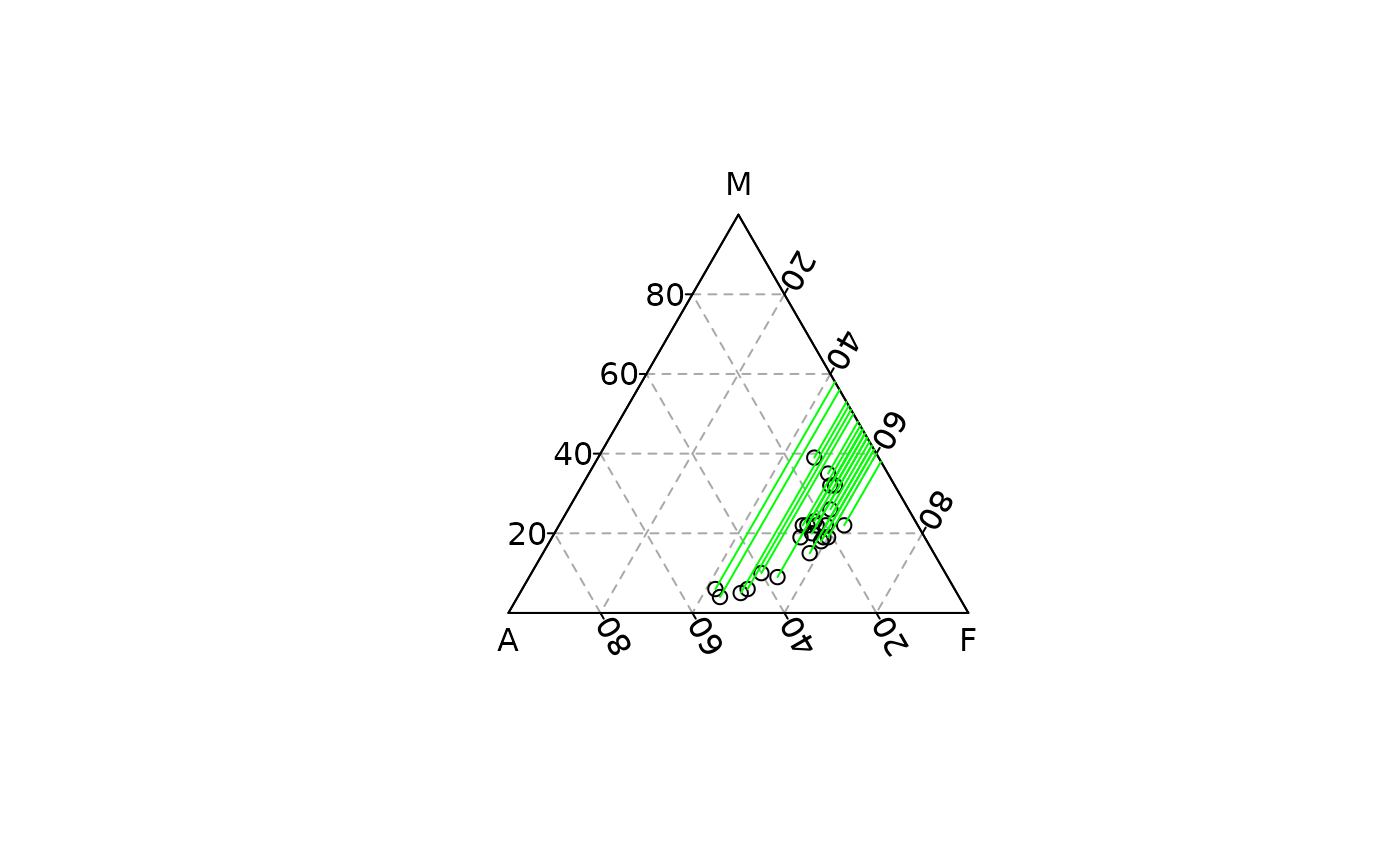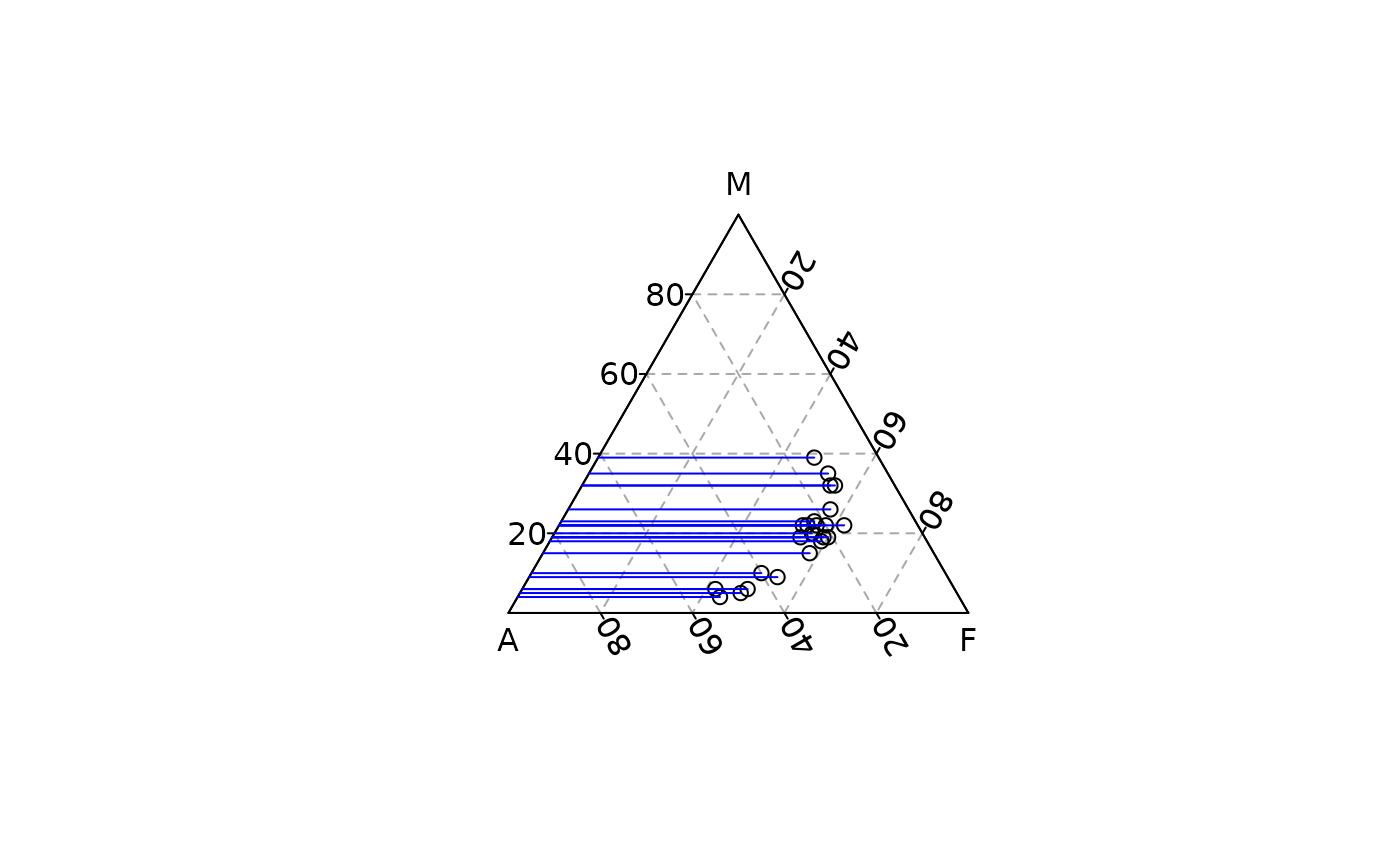
Add Cross-Hairs to a Ternary Plot
Source:R/AllGenerics.R, R/ternary_crosshairs.R
ternary_crosshairs.RdDraw lines that intersect at a point.
Usage
ternary_crosshairs(x, y, z, ...)
# S4 method for class 'numeric,numeric,numeric'
ternary_crosshairs(x, y, z, x_mark = TRUE, y_mark = TRUE, z_mark = TRUE, ...)
# S4 method for class 'ANY,missing,missing'
ternary_crosshairs(x, x_mark = TRUE, y_mark = TRUE, z_mark = TRUE, ...)Arguments
- x, y, z
A
numericvector giving the x, y and z ternary coordinates of a set of points. Ifyandzare missing, an attempt is made to interpretxin a suitable way (seegrDevices::xyz.coords()).- ...
Further graphical parameters (see
graphics::par()) may also be supplied as arguments, particularly, line type,lty, line width,lwdand color,col. Also the line characteristicslend,ljoinandlmitre.- x_mark, y_mark, z_mark
A
logicalscalar: should thex,yorzaxis component be drawn?
See also
Other geometries:
ternary_arrows(),
ternary_image(),
ternary_labels(),
ternary_lines(),
ternary_points(),
ternary_polygon(),
ternary_segments(),
ternary_text()
Examples
## Add cross-hairs
## Data from Aitchison 1986
ternary_plot(lava, panel.first = ternary_grid())
ternary_crosshairs(lava)
 ternary_plot(lava, panel.first = ternary_grid())
ternary_crosshairs(lava, y_mark = FALSE, z_mark = FALSE, col = "red")
ternary_plot(lava, panel.first = ternary_grid())
ternary_crosshairs(lava, y_mark = FALSE, z_mark = FALSE, col = "red")
 ternary_plot(lava, panel.first = ternary_grid())
ternary_crosshairs(lava, x_mark = FALSE, z_mark = FALSE, col = "green")
ternary_plot(lava, panel.first = ternary_grid())
ternary_crosshairs(lava, x_mark = FALSE, z_mark = FALSE, col = "green")
 ternary_plot(lava, panel.first = ternary_grid())
ternary_crosshairs(lava, x_mark = FALSE, y_mark = FALSE, col = "blue")
ternary_plot(lava, panel.first = ternary_grid())
ternary_crosshairs(lava, x_mark = FALSE, y_mark = FALSE, col = "blue")
